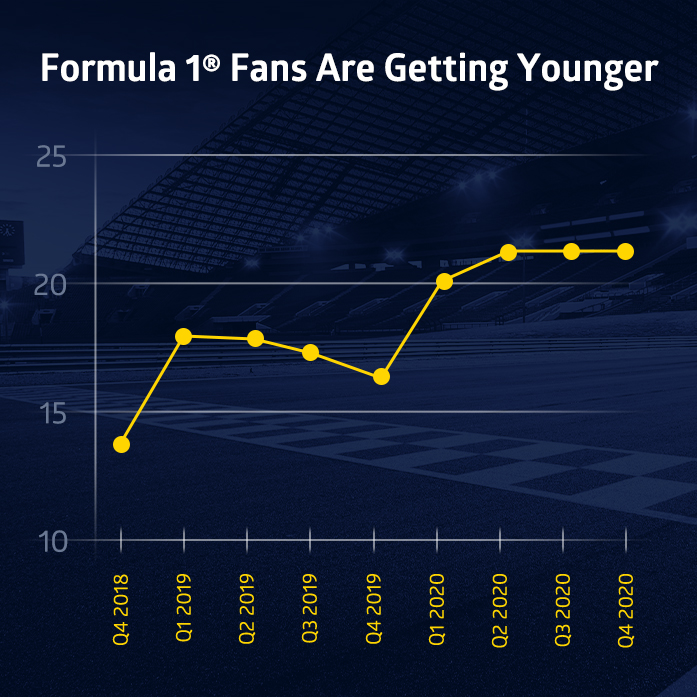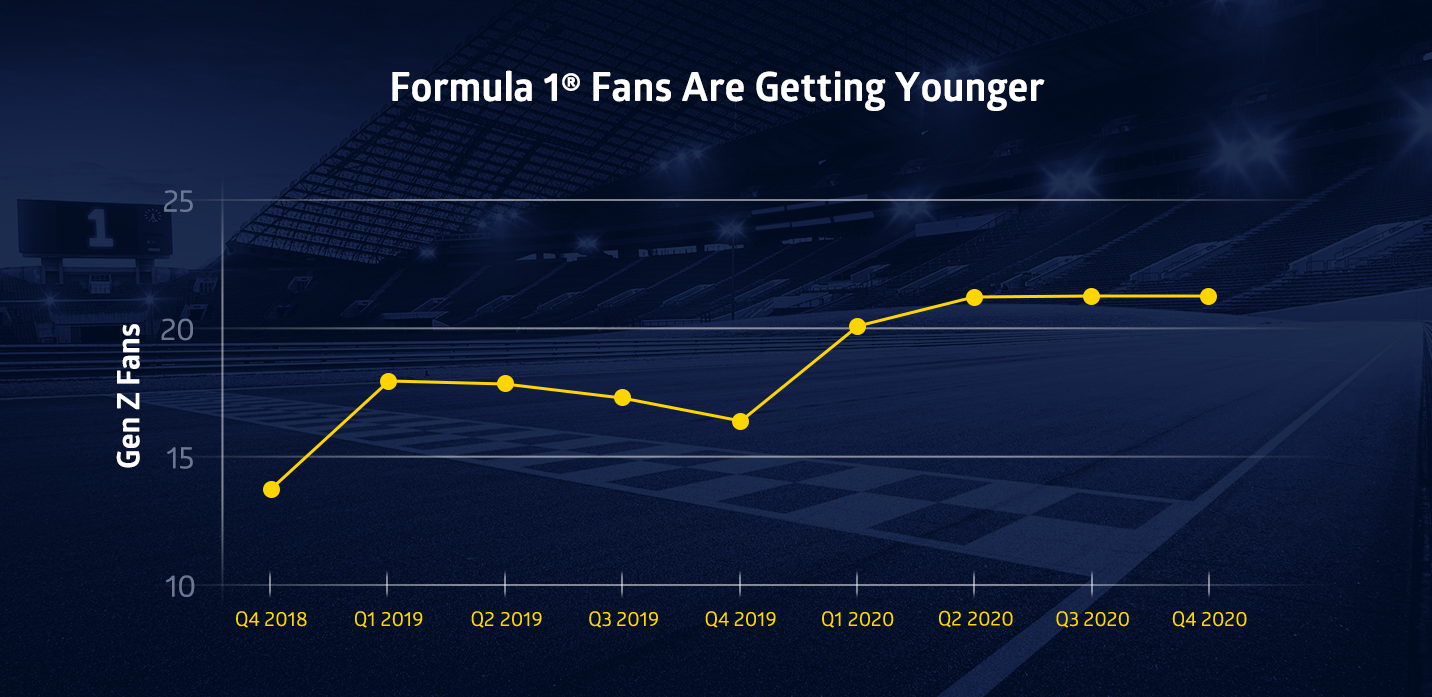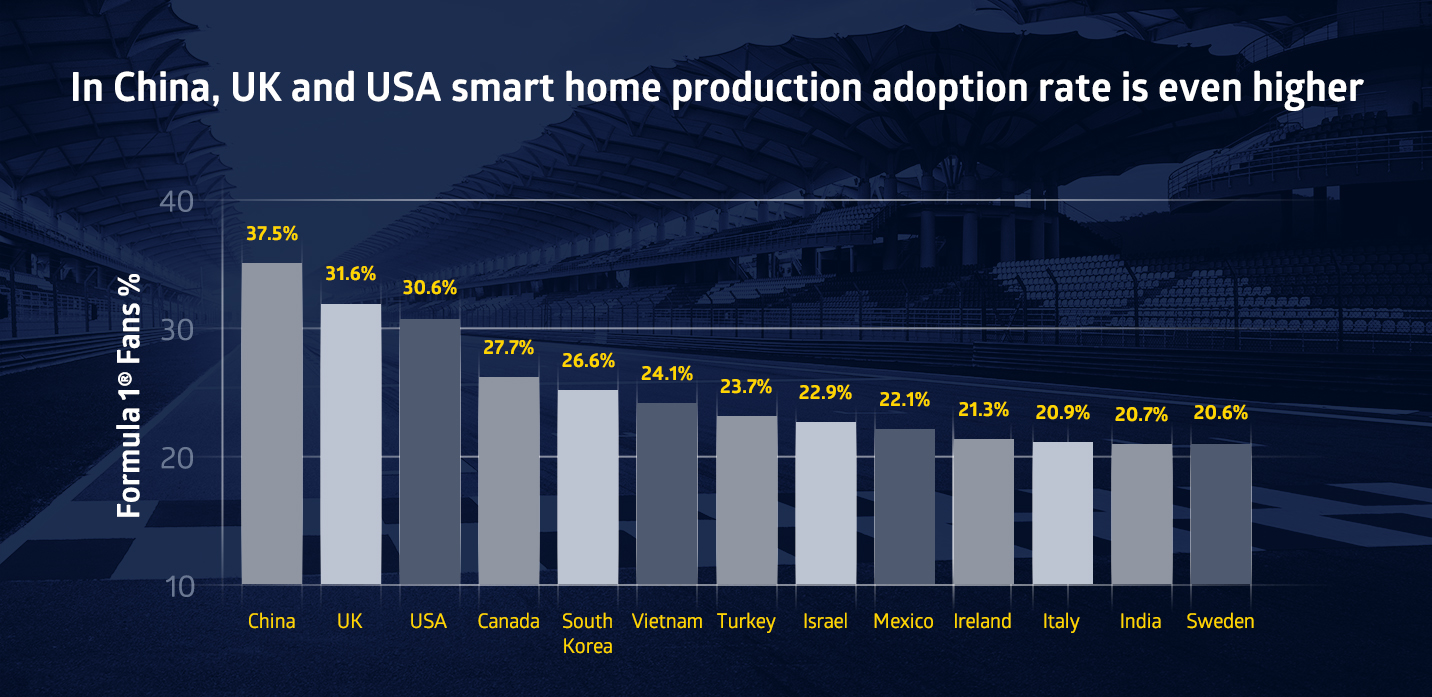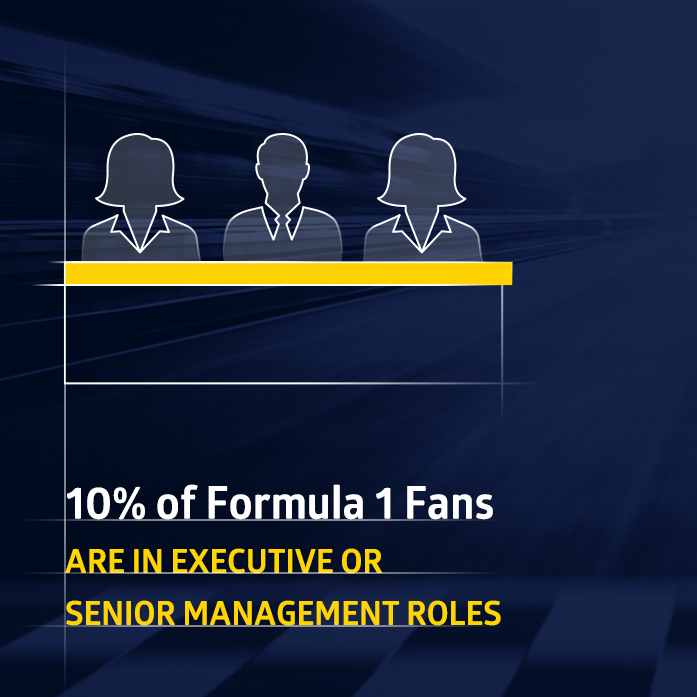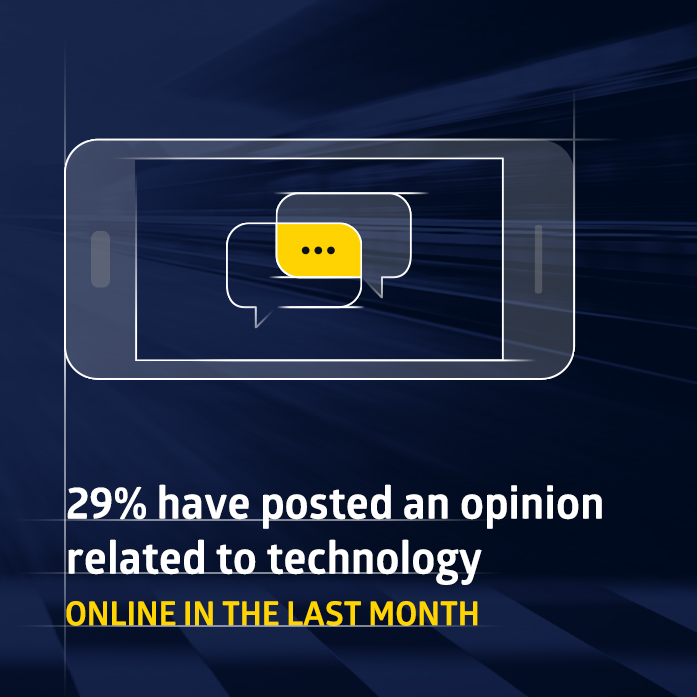A Fan-First Philosophy
If you are a motorsport fan, you will be counting down the seconds to the beginning of the Formula 1® season. No doubt you will also be binge-watching the new ‘Drive to Survive’ series that just landed on Netflix. Now in its third season, the show has been a step change for the sport, which up until a few seasons ago seemed to be at risk of losing relevance to the younger audiences seeking greener pursuits. So in 2018 the new owners of F1® made a brave decision. Where historically they had invested all their energy into the sport itself, they switched their focus to their customers, adopting a pioneering fan-first approach.
The Netflix series and the promotion of F1® Esports were the first of many initiatives F1® invested in, all focused on putting fans at the heart of the sport. They even went a step further setting themselves a mission to be a net zero carbon sport by 2030. And it has paid off – our data shows 50% growth in Gen Z fans – now one in five F1 fans are under the age of 25.
F1® is following the CX strategy adopted by many brands, and in doing so they have won over a new breed of motorsport fans. So what impact does that have on brands investing in the sport, particularly tech brands who have flooded the pitlane in the past decade?
Tech adoption speaks volumes
From years in F1® we know the fans are a unique breed. They relish the danger and thrill of F1®, yet they also love the technical and geeky nature of the sport. The good news is this hasn’t changed; if anything, it’s become even more pronounced as the sport attracts a younger demographic.
Today’s F1® fan is 1.5 times more likely than a non-F1® fan to follow the latest technology trends and news. As early adopters, they like to be the first to try new things and take risks, and they trust in the personal benefits of new tech.
This can be seen most clearly in their recent tech adoption habits. In Q1 2020, only 15% of F1® fans owned a smart home product, but in less that 12 months this has increased by an impressive +5% (+2% v the global average).
Fan experiences powered by technology
We’ve established F1® fans still have an insatiable appetite for new tech, but the key take-out for us is that the technology must have some kind of personal benefit.
Zarah Al-Kudcy, Head of Commercial Partnership Development, Formula 1® says “we have been opening up the sport to fans and the technology behind it; and the technology has in itself, allowed us to do that. Broadcast implementations such as closer camera angles, radio transcription, real-time fan graphics from behind the pit wall and enhancements to the F1® App have all been possible thanks to our technology partners.”
One of the best examples of this is AWS, who worked closely with F1® to address the feedback from fans and intention from the sport for more exciting wheel to wheel racing. AWS cloud software was able to drastically reduce the time required to put on detailed simulations of a car’s aerodynamics while racing, which has helped shape the design of the much anticipated car for the 2022 season. Ultimately giving fans what they want – closer racing! Find out more.
Even when faced with a pandemic and no racing, F1® furthered their commitment to fans by creating a Virtual Grand Prix Series supported by partners such as DHL.
And if B2B tech brands are wondering why this is relevant, then remember CEOs are fans too. These senior decision makers have loud and very influential voices when you consider that they are 2.5 times more likely to post a tech-related opinion online.
The next frontier
Our insights indicate that tech fatigue is now a reality and people are feeling starved of human interactions. And whilst it seems fans will be returning to tracks soon, the on-track experience is still inaccessible to most, so hybrid fan experiences are the future.
So now the race is on for rightsholders and brands to find ways of injecting more humanity and real life into virtual fan experiences, to ensure fans stay firmly at the front of the grid.
Data: GWI 2018-2020


